WordPress is the go to CMS (Content Management System) for millions of users across the globe. It’s free, user friendly and provides extensive customization.
But if you’re working on WordPress for the first time, it’s huge menu might seem a little overwhelming. Well it did to me and most people I know.
Wanna know how I get ahead of the game? Well here’s the secret: creating a custom admin menu help solves the problem. With optimized admin dashboard and menu items everything became simplified. And how I did that? With the help of WP Adminify.
Today, I will guide you through the steps of creating a custom admin menu in WordPress with WP Adminify. More specifically I’ll use the Admin Menu Editor by WP Adminify here.
Why Should You Create a Custom Admin Menu?
Currently if you see the admin menu in WordPress, it gives you access to various sections. It is what we call default menu or menu items. But, once your website grows and you use multiple plugins, these menu items increases and sometimes it becomes a mess.
And we all know how hard it is to work in a messy dashboard. And this is the exact reason, you should create a custom admin menu. With custom menu you can organize menus, menu items and settings just the way you want. And this will definitely help you with cleaning the messy admin dashboard.
Understanding WordPress Admin Menus
Before moving forward, let me give you a basic understanding of WordPress admin menu.
Admin menu is basically a navigation menu placed on the left side of your WordPress dashboard. These are links to go to a specific sections of your website backend. If you’ve just started, all the menu / menu items you see are the default ones.
You can create basic menus in WordPress. But creating a custom menu can give you more freedom to sort things. Like you can add, remove, or rearrange the menu wherever you like. WP Adminify presents the Admin Menu Editor to help you customize you dashboard with custom menu.
And, if you want to learn more about WordPress admin menu development, WordPress created a Administration menu guideline for you to check.
Planning Your Custom Admin Menu
To create a custom admin menu, first identify the menus / menu items you frequently use. Consider the needs of different users if you’re running a multi-author blog or a collaborative website.
You must have a clear plan on what to put on as menu item/s. This will help you create a menu that resonates with your work.
Creating a Custom Admin Menu with a Plugin
Choose a suitable plugin from the WordPress repository. Look for plugins like “WP Adminify” that offer intuitive interfaces for menu customization. Before following the steps make sure you have the WP Adminify plugin installed and activated.
If you are not a WP Adminify user, make sure to install it. Otherwise, scroll down and follow the steps to Add a custom admin menu by code. It doesn’t require any plugin to install.
Add new Menu
Please ensure that you have successfully installed the WP Adminify plugin. Once installed, kindly proceed to the “Menu Editor” option panel and select the “Add Item” option to continue. The interface should resemble the provided screenshot.
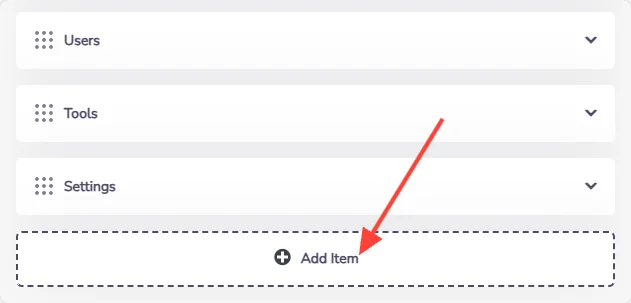
Custom admin menu interface
After selecting “Add Item” , you’ll be see the interface that display all the settings needed for creating a custom admin menu item. Also, you’ll notice the availability of a submenu option. This allow you to add sub-items under any primary custom menu.
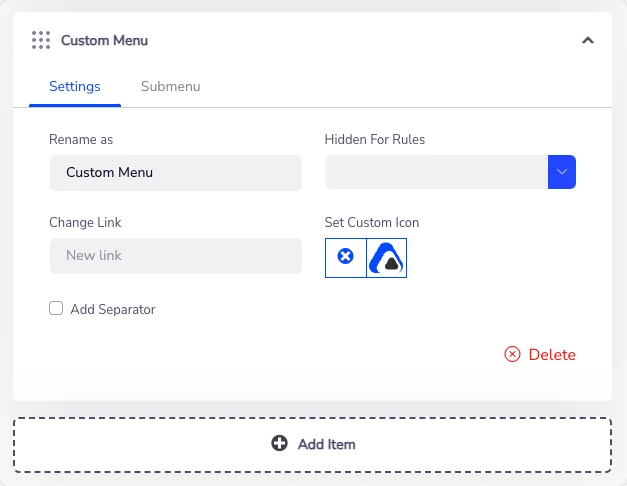
Fill up options for Custom Admin Menu Items
Begin by meticulously completing all the necessary options. First, provide a descriptive name for your custom menu item. Next, configure the associated link, and if needed, selectively hide the menu based on specific user roles or individual users.
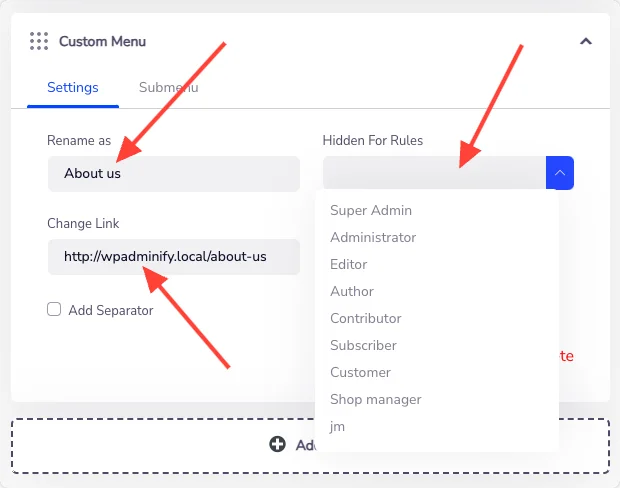
Set icon for custom menu item
This admin menu editor offers Dashicons, Simple Line Icons, Themify Icons, and Icomoon Icons. You can upload any type of Custom Icons too. It will automatically adjust the height and width of your icon.
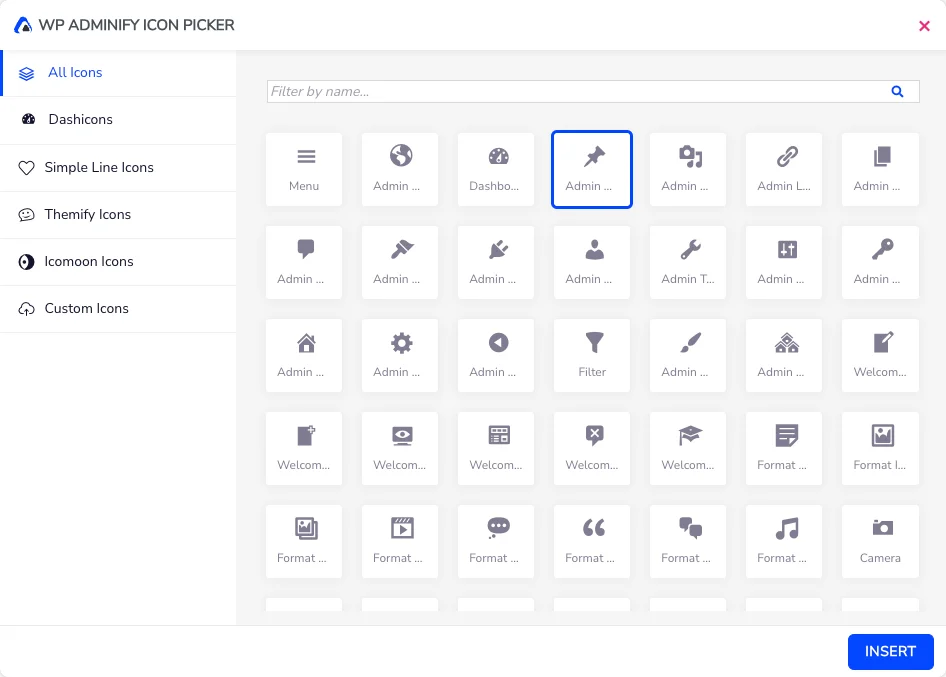
Add separator for Admin Menu items
Observe the appearance of the custom menu with a separator. Simply enable the checkbox labeled “Add Separator” and save your changes. Additionally, you have the flexibility to add separators to any existing admin menu items.
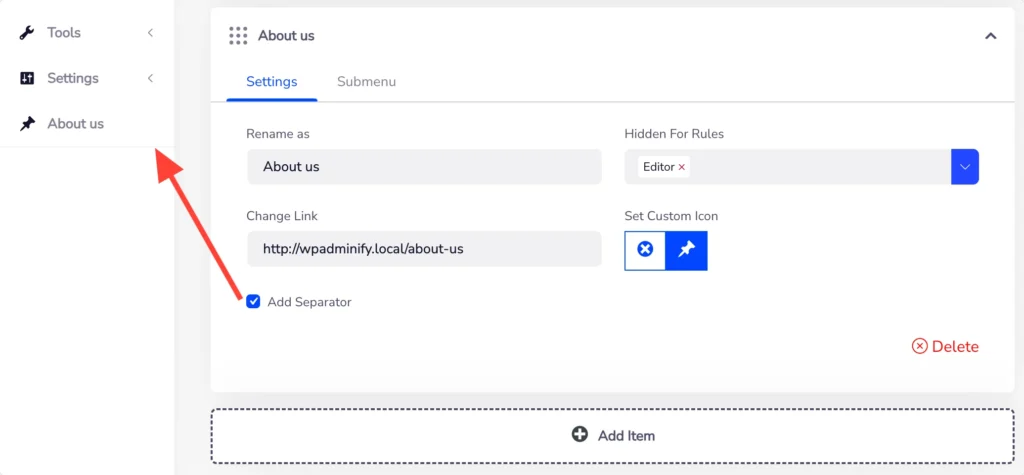
Add submenu under custom admin menu items
Creating the main custom menu is essential, but there are instances where additional sub-menu items need to be crafted beneath a primary admin menu item. Using the submenu option, you can generate an unlimited number of submenus. However, it’s important remember that custom icons are disabled for these submenu items. As WordPress does not permit icon display for submenu items.
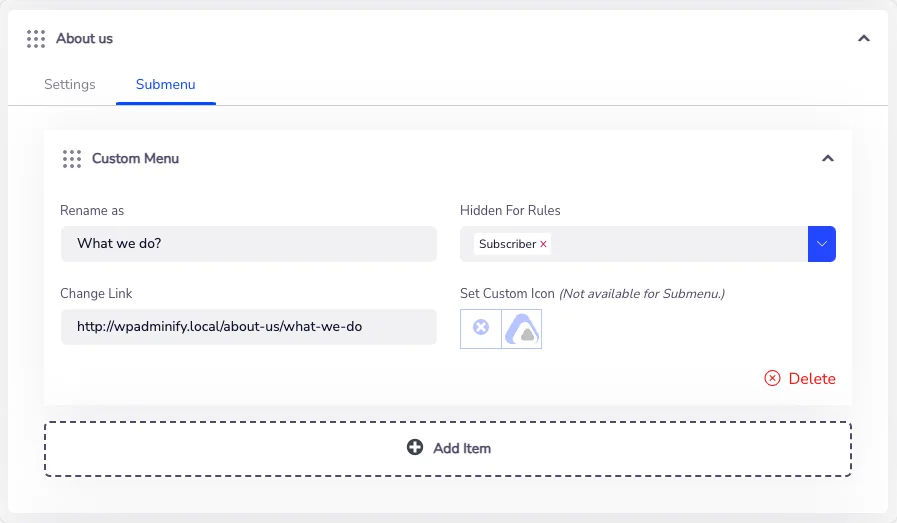
And that’s how to add custom admin menu to the WordPress dashboard.
But you can create custom menus without plugins as well. But that will need a bit of coding knowledge. I’ll now guide you through creating a custom admin menu item without using any plugins.
Want to simplify your admin menu customization?
WP Adminify’s Admin Menu Editor lets you organize your menu items just the way you want and improve your workflow in seconds!

How to Create Custom Admin Menu Without a Plugin
If you have coding knowledge and want to manually create custom admin menu, follow these steps:
Accessing Your Theme’s Functions.php File
- Log in to your WordPress dashboard.
- Go to “Appearance”
- Select “Theme Editor.”
- Click on “Theme Functions” or “functions.php.”
This will let you access the functions.php file.
Adding Code to Create a Menu
Add the following code snippet to your functions.php file to create a basic custom admin menu:
// Create a custom admin menu
function custom_menu() {
add_menu_page(
'Custom Menu', // Menu title
'Custom Menu', // Page title
'manage_options', // Capability (adjust as needed)
'custom-menu', // Menu slug
'custom_menu_callback', // Callback function
'dashicons-admin-generic', // Icon (optional)
99 // Position in the menu
);
}
// Callback function for the menu page
function custom_menu_callback() {
echo '<div class="wrap">';
echo '<h1>Hello World!</h1>';
echo '<p>This is your custom admin menu page.</p>';
echo '</div>';
}
// Hook into the admin menu
add_action('admin_menu', 'custom_menu');Replace 'Custom Menu' and 'custom_menu_callback' with your desired menu title and content.
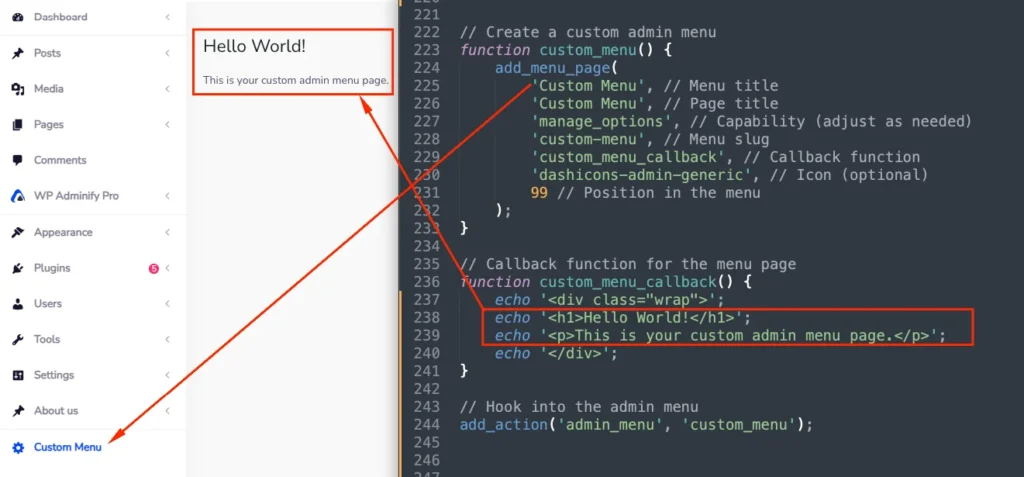
Conclusion
Now, you know both ways to create custom admin menu for your WordPress dashboard. WP Adminify helps you create custom menus without using any codes. It’s easy and beginners-friendly.
But if you are a code enthusiast, I’ve added the manual option to create custom menu using codes as well.
But, if you’re not into coding, WP Adminify will help you with that. You can create your custom menus without any trouble.
